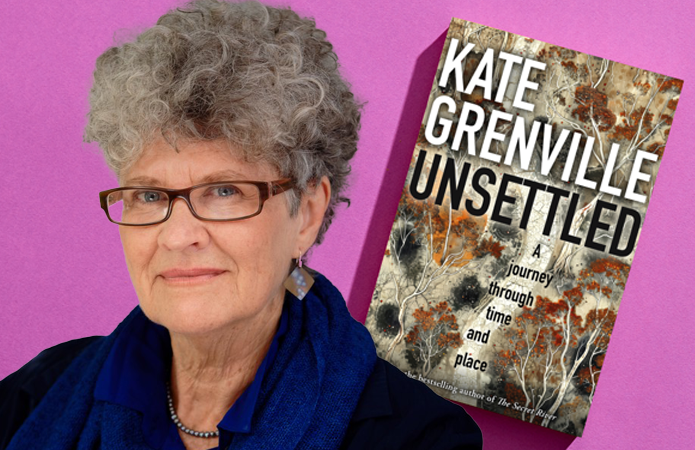Review: Unsettled, Kate Grenville, Black Inc
In Unsettled, Kate Grenville takes a road trip from Sydney up to Tamworth and beyond, to find out about her ancestors, what part they might have played in the dispossession of Aboriginal Australians, and how, ultimately, she and her fellow non-Indigenous Australians should deal with the knowledge of Australia’s past.
At the end of her book, Grenville visits the site of the Myall Creek massacre. In nearby Bingara, she notes, recognition of the massacre was not forced upon locals by outsiders, but, rather, it was the locals who faced up to, and memorialised, the atrocities that occurred nearby. Yet at the massacre site in 2005 someone defaced the memorial with a chisel, a somewhat fruitless but deliberately angry act of resistance to reconciliation. Grenville’s book wrestles with these two impulses sitting within the national psyche.
Grenville has used her ancestors and family history in her fiction. Her ancestor Solomon Wiseman, for whom Wisemans Ferry is named, is the basis of a character in The Secret River. Restless Dolly Maunder is based on the life of her grandmother. In this latest book, these family figures guide Grenville’s itinerary as she weaves her way north of Sydney through sparsely populated valleys and sandstone escarpments up to the plains around Tamworth. Her fiction is an example of writing what you know, but she notes that she didn’t know exactly, and perhaps didn’t want to know, but this book is an attempt to know more fully.
She begins by calling her road trip a pilgrimage, partly because pilgrimages involve a form of self-examination, but she later decides the word is too pompous. Perhaps unsurprisingly for a writer, her book becomes a means of examining words and their meanings, and how they can be used to obfuscate. She travels up Settlers Road, noting that ‘settler’ is inappropriate, as it implies a gentleness that belies the fact that the settlers stole land. Similarly, ‘pioneers’ and ‘explorers’ wipes Aboriginal people from the landscape, restating the notion of terra nullius, and the language of land ‘grants’ suggests that governors had the right to give land away. Signage of Anglicised places perpetuates the myth that the land was empty, even while elsewhere signage acknowledging First Nations people.
Instead, Grenville writes, squatters ‘opened up’ the land like burglars opening a door. Land was simply ‘taken’, not ‘taken up’, and ‘selectors’ selected what was stolen, like receivers of stolen goods in some dimly lit parking lot. Words cover violence and injustice, just as they can point to them. In this case, they remove Indigenous people from the landscape.
This sits alongside the fact that there is undoubtedly more honesty about what happened on the ‘frontier’ and that this history is now recognised in schools, museums and the narratives of the nation’s past. But for Grenville the landscape of the everyday still distorts history, and her concern seems to be that this violent history is seen as simply history, that Indigenous people who are still dealing with the trauma of history are still at the margins of the contemporary Australian identity.
The discontinuity of this history is symbolised for her in a childhood visit to the carved whale on the rock at Balls Head. She writes that the question of what happened to the people that carved the whale wasn’t asked, and that the story of the carving is indicative of how Aboriginal Australians are remembered, but then also taken out of the landscape, and their land taken from them. (The fact that Grenville doesn’t meet Indigenous people on her road trip further underlines this.) Indigenous culture is acknowledged, but the reality of how that culture was upended is not so easy to acknowledge.

Grenville’s book might be seen as an account of her particular experience of ancestry, and this is exactly what it is – not so much a set of answers as a set of questions that her and people with similar backgrounds need to ask. But it might also, as Anzac Day approaches, be a reminder that in our own ways we need to investigate the national narratives and be honest about how we deal with those parts of our past that aren’t so worth celebrating.
Nick Mattiske blogs on books at coburgreviewofbooks.wordpress.com and is the illustrator of Thoughts That Feel So Big.












